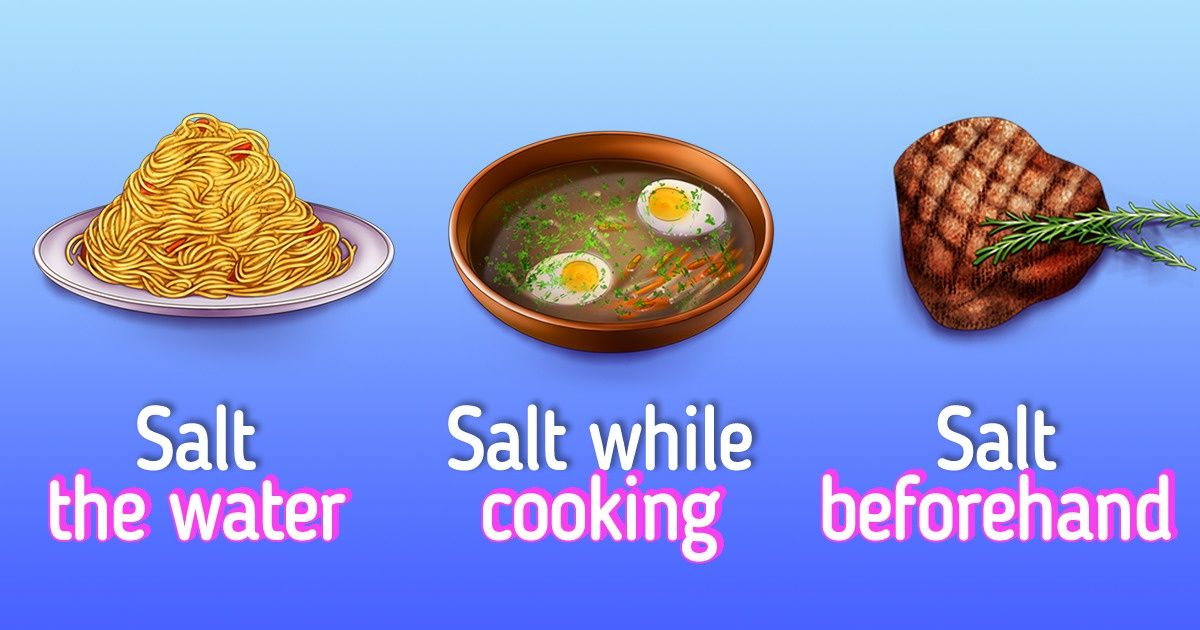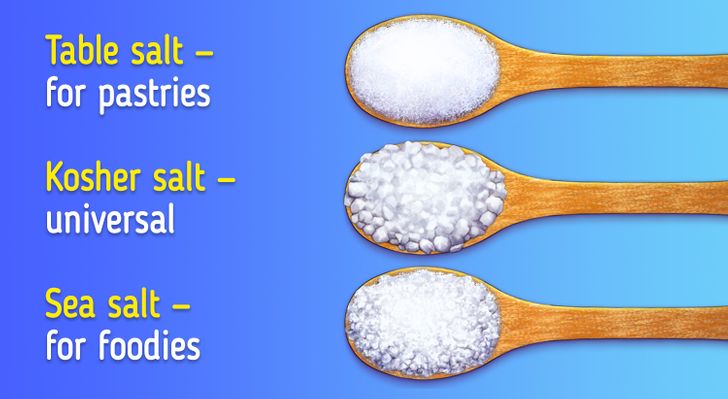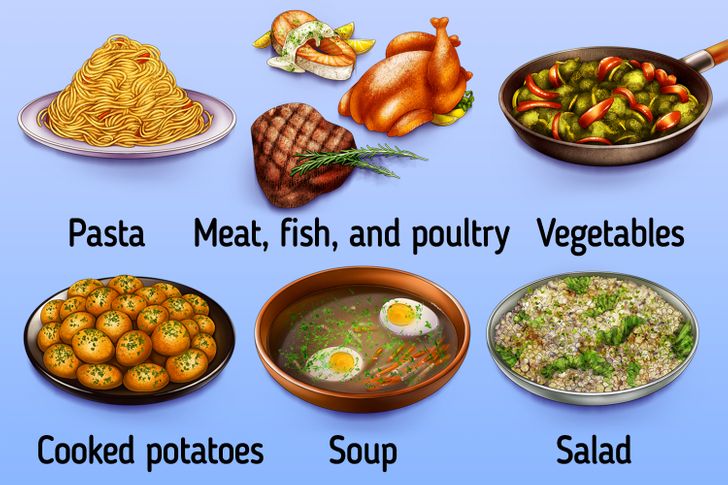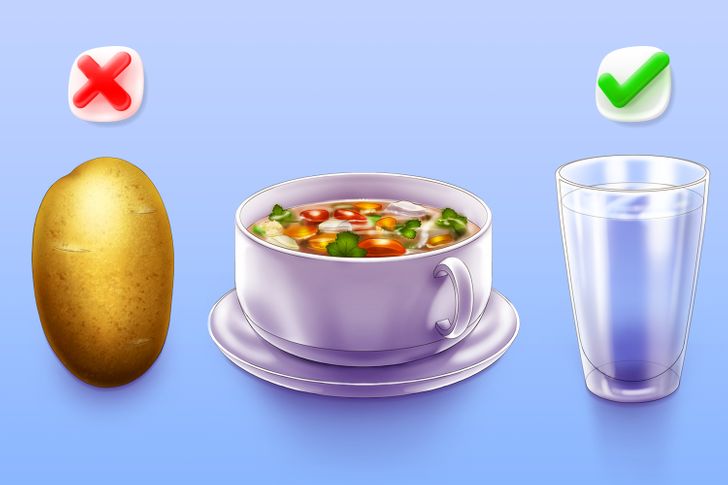How and When to Salt Food to Discover Its Taste

We add salt into our food in order to make things saltier. Its main purpose is to enhance the taste of the ingredients.
5-Minute Crafts found out when and how we should salt food to make it delicious.
What we need salt for

Salt has a lot of functions:
- It preserves food. When we salt food or vegetables, we actually use an old method of food preservation. It was widely used before fridges were invented. Salt prevents germs from growing because it sucks the moisture out of food.
- It enhances texture. When making yeast bread, the amount of salt influences the rate of fermentation and gluten formation, both of which affect the final texture.
- It improves taste. In small amounts, salt enhances the sweetness and can neutralize bitterness — for example, broccoli and olives get less bitter.
- It’s a source of nutrients. Pure salt is 40% sodium and 60% chlorine. We need these elements to live. The salt that contains iodine prevents thyroid disorders.
There are many kinds of salt, and some of them are good for certain foods, like the following.
- Table salt is great for pastries.
- Kosher salt is universal and can be added to any food.
- Sea salt is used as an accent but not the main source of salt in a meal. There are many kinds of sea salt and they have different tastes, so the amount of such salt in a recipe is not reliable.
How and when to salt food

- Pasta: Salt the food beforehand and don’t be scared of adding too much: you will remove most of it once you get rid of the water.
- Meat: Beef and pork can be salted several hours before cooking. The salt will get rid of some of the moisture and it will all go back in together with the salt.
- Vegetables: When cooking vegetables, it’s best to add salt at the beginning or during the process. This gives vegetables the opportunity to absorb the salt nicely instead of getting a superficial coating.
- Potatoes: Always salt the water before adding the potatoes.
- Soups: You can salt all the ingredients of the meal during cooking before you put all of them into the pot. For example, when frying the onions and tomatoes, add the salt when they are still on the frying pan.
- Salads: Add a bit of salt to the dressing right before serving.
If the recipe doesn’t state the exact amount of salt needed, you can use this manual (for table salt):
- Soups and sauces: 1 tsp for 1 liter
- Fresh meat: 2 tsp for 450 grams
- For dough: 1 tsp for 4 glasses of flour
- For porridge: 1 tsp for 2 glasses of water
- Vegetables: 1 tsp for 3 glasses of water
- Pasta: 1 tbsp for 2 liters of water
What to do if you added too much salt

First, try to add some more ingredients. If it’s soup or sauce, a glass of water or broth will help. If you’ve added just a touch more salt than needed, try adding lemon juice or olive oil.
If you think that a fresh potato will magically drag all the extra salt out, it doesn’t really work.
Share This Article